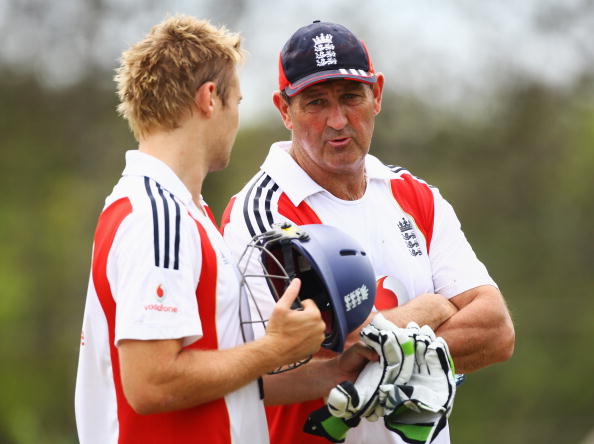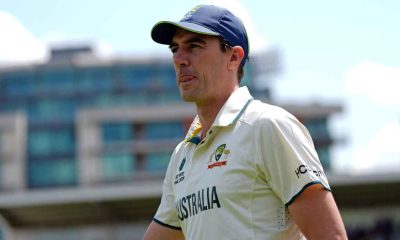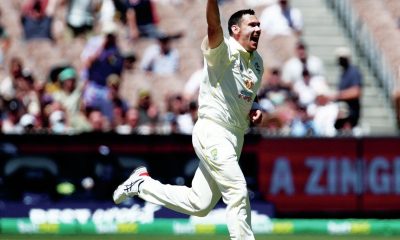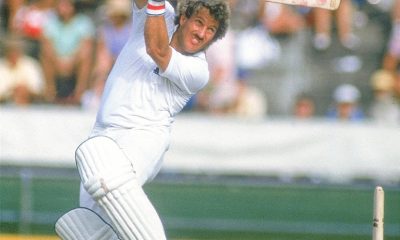
Lord’s, Saturday July 15, 1989. Nottinghamshire require four runs from the final ball of a cracking Benson and Hedges Cup final against Essex.
Wily left-arm swing bowler John Lever, calling on all his experience in county and international cricket, sends down a near-perfect yorker.
Notts off-spinner and No.9 batsman Eddie Hemmings digs it out so sweetly that it slips through the cover ring and, as the rival fans in the capacity crowd cheer and fear its progress in equal measure, it stays just enough ahead of the chasing Brian Hardie to crawl over the rope in front of the Grandstand to secure a dramatic victory.
Outside the ground a queue has been forming for an hour or so. It is made up of the skint, the homeless, the desperate. As on other major match days, once the ground has disgorged the 28,000 who came to watch the first showpiece of the county season, they will go in and clean up, for which they will each be paid ten quid, cash in hand.
Among them this day, so the story goes, is one of the most gifted professional footballers of his generation, a star of the old First Division with one of the most fashionable London clubs, so lost to gambling that his chairman used to pay his wages to the bookies direct.
The only thing he couldn’t pass, they said of him, was a betting shop. Not that he ever had much while he was at the top. Now, five years after retirement, a tenner is a tenner.
Graham Gooch, captain of the beaten Essex side that day, did not know of this cautionary tale unfolding while he and his teammates were consoling themselves in the pavilion dressing room and sharing beers with their opponents.
But Gooch has seen and heard enough similar stories in his time to understand how acute was the need for the £50,000 he donated to the Professional Cricketers’ Association (PCA) for their 50th Anniversary legacy appeal, from the scholarship he set up 16 years ago, to go to funding a gambling awareness programme which is being presented to all 18 first-class counties and a confidential helpline for those in the game who fear their habit has taken too strong a hold.
At New Road on Wednesday, Worcestershire’s players listened wide-eyed and, on occasion, open-mouthed to the case history of Paul Buck, whose own addiction, the life of gambling he kept secret from his wife for ten years, including ownership of two racehorses she had no idea existed, and the criminal fraud he committed against his employers at Santander to fund it, left him with debts running into hundreds of thousands of pounds and led him to attempt suicide.
After admitting to everything, he was prosecuted and spent two years and eight months in jail where, reading all the books he could find on the subject in the prison library, he decided to replace that addiction with a mission to find out how and why it happens and from which came the idea to set up EPIC Risk management to try to help others before they are past helping.
Once a player himself – he captained fellow Preston lad Andrew Flintoff in Lancashire junior cricket – Buck came to learn that sportsmen and women were among the most vulnerable to the dangers of “social” gambling becoming “problem” gambling because they are, by nature, ultra-competitive, the buzz of competitive sport a kind of drug that some find it hard to do without.
He also found that cricketers are three times more likely to become problem gamblers than the general population and significantly more likely than other sportspeople because the game carries so much more downtime.
The opening batsmen who nicks off first ball of a Championship match, cites Buck as a for-instance, may have little to do but sit, stare, brood and, potentially, get out his mobile phone or laptop and log onto his online gaming accounts.
Although, to try to combat match-fixing, such devices are barred from the dressing rooms during the hours of play in international cricket, this only happens in county cricket when a match is being televised.
As part of the terms of their employment, professional cricketers must sign contracts that prohibit them from gambling on their own sport, but there is nothing new in cricketers doing their dough on horses and hounds.
Oh, how we laughed when certain Ashes combatants cashed in on Ladbrokes’ decision to offer 500-1 against England coming back to win the Headingley Test in 1981 and in those days of innocence nothing more was thought of it.
But whereas once such activities required a trip to the high street, or for cricketers the tent in the corner of the ground, now, with access to betting instant and widespread, the dangers are considerably more acute.
Buck’s example may be extreme but at one stage he was running 93 separate betting accounts.
His research, conducted in conjunction with the PCA, showed that 87 per cent of professional cricketers have gambled in the past 18 months, 67 per cent admitted to doing so in the last month and that players are using the most addictive forms of fixed odds betting terminal and online poker.
At a recent PCA event for rookie cricketers, 20 of the 22 young players present said they had an online betting account.
Meanwhile, the industry’s big guns redouble their efforts and their outlay to normalise and glamourise gambling, with tv advertising rising a staggering 130 per cent since 2007.
Anyone who has watched Test or ODI cricket on tv will surely be aware of how often they, and their kids, are treated to exciting images of canny young men who seem simply unable to stop winning money through sports betting, and of the excellent hard man actor Ray Winstone informing people that, as he gambles “responsibly”, all will be well.
Yet gambling addiction has recently been reclassified to full addiction status, the same as heroin abuse, by the Diagnostic and Statistical Manual, leading, potentially, to criminality, bankruptcy, divorce, depression and suicide.
Buck continues to lobby the government to shift those ads until after a late-evening watershed.
“There should be no gambling ads before a 9pm watershed,” he says. “You can’t watch a cricket match on TV where there is a natural break in play and there not be two or three gambling adverts. It’s clever, subliminal and needs to change.”
With so much revenue at stake for TV companies and the bookies themselves, good luck with that.
In the meantime, David Leatherdale, the PCA chief executive, calls the dangers to his members “definitely an issue”, and he and Gooch agree that the kind of education Buck provides can pay a key role in prevention as well as cure.
According to Gooch: “If we can educate people, make them aware of the pitfalls and get insight from people who have been down that route and fallen foul then, hopefully, they can be warned about the potential dangers.”
If the scheme succeeds in that, Gooch’s £50,000 will turn out to have been the best bet in cricket history.
This piece originally featured in The Cricket Paper, March 24 2017
Subscribe to the digital edition of The Cricket Paper here



















